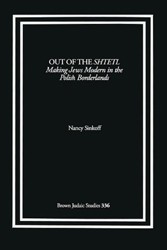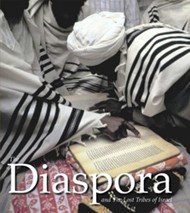By
– December 27, 2011
This engaging book is a creative effort to retell and explore the East European Jewish immigrant experience by focusing on Jews from Bialystok who settled across the seas in America, Africa, Australia, Palestine/Israel, and beyond, while maintaining their transnational links to their Polish hometown. The author argues that there were ongoing mutual contacts between the capital of the “Bialystoker Empire” and its colonies abroad. Those colonies grew in confidence, especially in New York City with its iconic Bialystoker Center on the Lower East Side of Manhattan.
The author’s sources include materials in a variety of languages drawn from archives in five countries, as well as numerous interviews, press sources, and other published materials, along with photographs and drawings. Of special value is the wealth of material originating from the Bialystoker Center and its analogs in other countries.
A small complaint can be raised about clumsiness in transcription and translation of a number of Yiddish and Polish terms, as well as typographic errors. However, these defects do not detract from the fascination of the tour through the regions of the transnational Bialystoker Empire that continues to exist even after the Jewish community in that Polish city was annihilated by the Nazi Germans.
Beginning with an account of Jewish Bialystok, this book itself examines the effects of mass immigration on Jewish identity in a variety of settings: New York, Argentina, Australia, Israel, and more. Bialystokers in exile clearly attempted to rebuild their hometown in new promised lands of opportunity, where those same Bialystokers and their children undertook to care for their hometown by sending remittances and aid home. Bialystokers in America and elsewhere became experts at organizing to mobilize aid for the needy, both in their old hometown and in their new hometowns, and ultimately also in the reborn State of Israel. Bibliography, illustrations, index, maps, notes, photographs.
The author’s sources include materials in a variety of languages drawn from archives in five countries, as well as numerous interviews, press sources, and other published materials, along with photographs and drawings. Of special value is the wealth of material originating from the Bialystoker Center and its analogs in other countries.
A small complaint can be raised about clumsiness in transcription and translation of a number of Yiddish and Polish terms, as well as typographic errors. However, these defects do not detract from the fascination of the tour through the regions of the transnational Bialystoker Empire that continues to exist even after the Jewish community in that Polish city was annihilated by the Nazi Germans.
Beginning with an account of Jewish Bialystok, this book itself examines the effects of mass immigration on Jewish identity in a variety of settings: New York, Argentina, Australia, Israel, and more. Bialystokers in exile clearly attempted to rebuild their hometown in new promised lands of opportunity, where those same Bialystokers and their children undertook to care for their hometown by sending remittances and aid home. Bialystokers in America and elsewhere became experts at organizing to mobilize aid for the needy, both in their old hometown and in their new hometowns, and ultimately also in the reborn State of Israel. Bibliography, illustrations, index, maps, notes, photographs.
Robert Moses Shapiro teaches modern Jewish history, Holocaust studies, and Yiddish language and literature at Brooklyn College of the City University of New York. His most recent book is The Warsaw Ghetto Oyneg Shabes-Ringelblum Archive: Catalog and Guide (Indiana University Press in association with the U.S. Holocaust Memorial Library and the Jewish Historical Institute in Warsaw, 2009). He is currently engaged in translating Polish and Yiddish diaries from the Łódź ghetto and the Yiddish Sonderkommando documents found buried in the ash pits at Auschwitz-Birkenau.





